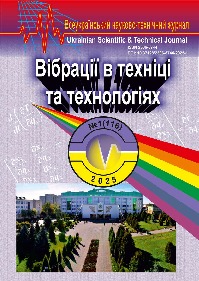id: 39365
Назва: Rheology in standardized food formation processes
Автори: Goots V., Solona O., Polievoda Y., Symonik B.
Ключові слова: formation of food products, deformation of dispersed systems, rheology, mathematical modelling of deformation, residual deformation, standardization, quality control
Дата публікації: 2025-05-28 09:09:22
Останні зміни: 2025-05-28 09:09:22
Рік видання: 2025
Аннотація: The article examines the formation of food products, particularly meat-based ones, produced from structured raw materials. The quality of the forming process is of critical importance and depends on the physico-mechanical properties of the raw materials (viscosity, plasticity, adhesion) and the correct selection of technological parameters. Standardization plays a key role in this process, ensuring consistency in the requirements for raw material composition, equipment parameters, and production conditions. National (DSTU) and international (ISO) standards define the norms for the rheological characteristics of food masses, forming accuracy, sanitary requirements, and permissible thermal and mechanical loads. Adherence to these standards enables consistent product quality, safety, and efficiency in the production process. Further research into forming processes should be based not only on the physicochemical properties of the mass but also on the requirements of current standards regulating food production under industrial conditions. The article presents the results of theoretical and experimental studies on the compression mechanism of concentrated, comminuted food raw materials, taking into account the standardization requirements for product forming processes. To model the behavior of food masses, the Kelvin body rheological model was selected, which accounts for the viscoelastic properties of the systems. This approach allows the behavior of products during deformation to be formalized in accordance with the standard technological parameters outlined in regulatory documentation for meat products. The research results, demonstrating the relationship between deformation and the duration and conditions of loading, were presented graphically. For the first time, the mechanism of residual plastic deformation was scientifically substantiated, and a mathematical model was developed for its calculation, which enables its consideration in quality control systems in accordance with current standards. These approaches can be integrated into standardized methods for monitoring and optimizing forming processes in the food industry.
URI: http://socrates.vsau.org/repository/getfile.php/39365.pdf
Тип виданя: Статті у наукових фахових виданнях України (Copernicus та інші)
Видавництво: Вібрації в техніці та технологіях. 2025. № 1 (116). С. 112-119. DOI: 10.37128/2306-8744-2025-1-15
Розташовується в колекціях :
Ким внесений: Адміністратор
Файл : 39365.pdf Розмір : 713770 байт Формат : Adobe PDF Доступ : Загально доступний

| |
|
|